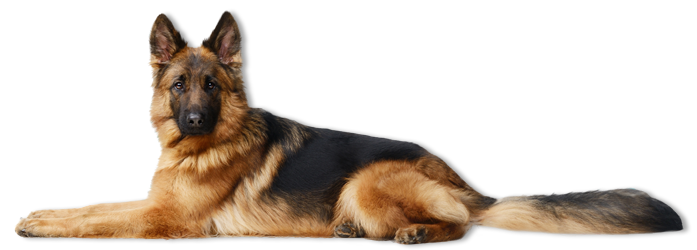How to train your German Shepherd to walk on a loose leash

one wants to walk a dog with tension in the leash. Every dog owner wants to walk harmoniously with their dogs. While you may believe that your GSD’s pulling leash behavior represents its desire to be a pack leader, its desire for strong push has a much simpler explanation.
Going outside for a walk is the most exciting part of your dog’s day, and hence leash can refrain the dog from acting naturally. A leash is essential for safety; however, you must train your dog to walk on a loose leash positively to make walking delightful for both. So, here’s how to train German Shepherd to walk on a loose leash.
Pre-requirements
1. Practice ‘Check-in’ behavior
Develop a habit of checking in with you in your dog to facilitate communication. Mark and appreciate every effort your dog makes to check in with a glance. Practice this in low-distraction places in the initial stages.
2. Be present
You must be present to respond to your dog’s check-in while training. Observe your dog and mark even its slightest glance at you. Also, make sure that harness is not harming your furry friend.
3. Importance of rewards
Rewards can act as a potent source of motivation for expected behavior. Praise your dog in a high voice and offer treat whenever it pays attention to you for a “check-in”. Do not hesitate to give treats as long as your dog walks near you with slack in the leash.
Tips
1. Appreciate the good behavior
Prefer to give treats while the dog is near you. Avoid giving it a chance to bolt forward and tighten the leash. Make sure to deliver treats close to your body rather than towards the dog. The realization of regular treats will prove a good motivator for your dog.
2. Reward while in motion
Give treats while you walk instead of stopping to do so. Frequent stops for rewards can frustrate the dog, backfiring the whole process of training. So, coordinate with your dog to deliver treats while walking.
3. Stop and stand still on leash pull
Never let your dog pull at the end of the leash. When your dog does so, stop immediately and avoid budging. Let your dog check-in with you and then resume walking. This may take a while, but eventually, your dog will make progress.
4. Do not reinforce pulling
If your dog is pulling too far ahead of you, then you can choose to change direction. This technique is also useful to distract the dog while it chases someone. Therefore, you need to stop and use vocal cues and body language to alert your dog about change in direction.
In all, praising your dog for complying can do wonders in training. The more you make it feel better, the more it will choose to walk comfortably on loose leash. Keep reinforcing your dog’s check-in behavior with treats and upbeat words.


